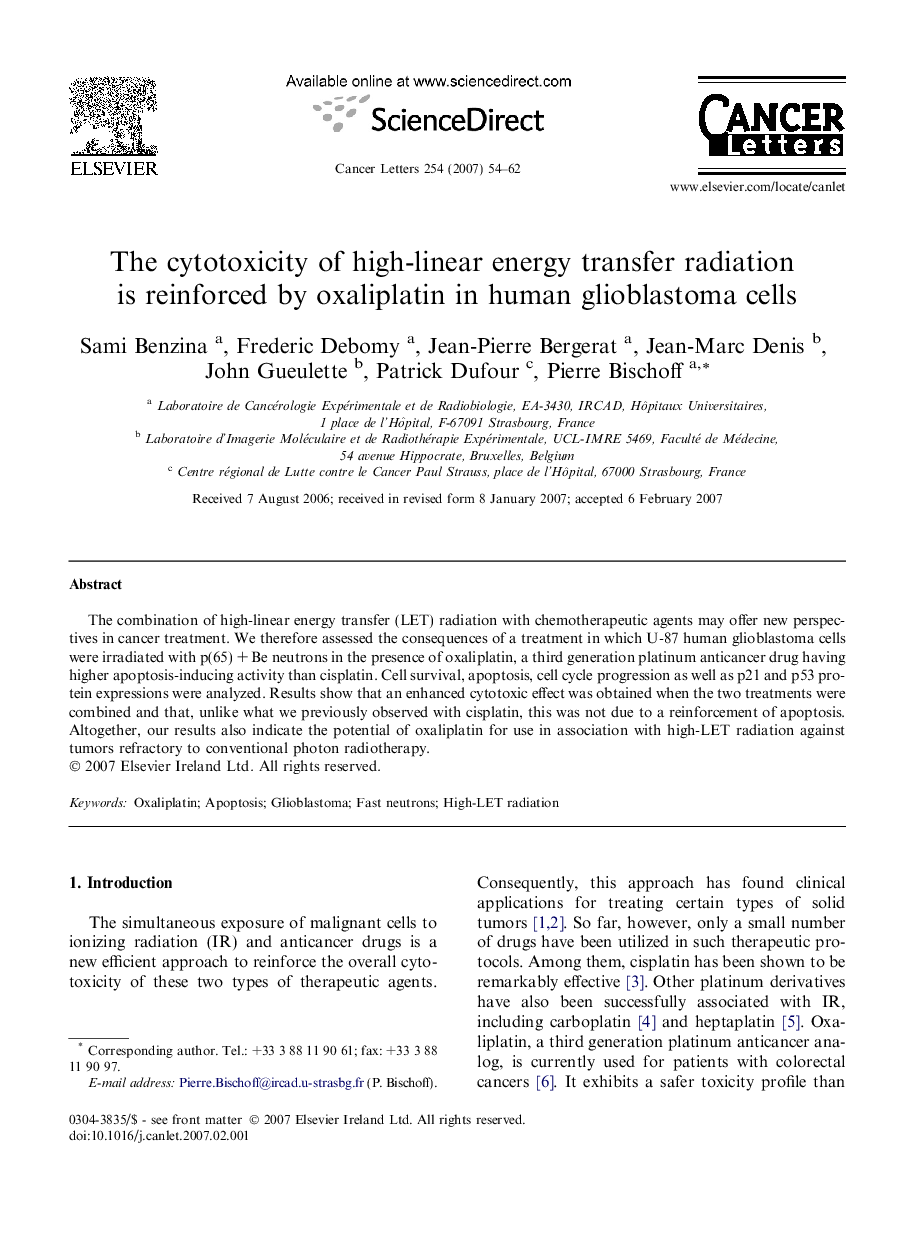| Article ID | Journal | Published Year | Pages | File Type |
|---|---|---|---|---|
| 2116788 | Cancer Letters | 2007 | 9 Pages |
The combination of high-linear energy transfer (LET) radiation with chemotherapeutic agents may offer new perspectives in cancer treatment. We therefore assessed the consequences of a treatment in which U-87 human glioblastoma cells were irradiated with p(65) + Be neutrons in the presence of oxaliplatin, a third generation platinum anticancer drug having higher apoptosis-inducing activity than cisplatin. Cell survival, apoptosis, cell cycle progression as well as p21 and p53 protein expressions were analyzed. Results show that an enhanced cytotoxic effect was obtained when the two treatments were combined and that, unlike what we previously observed with cisplatin, this was not due to a reinforcement of apoptosis. Altogether, our results also indicate the potential of oxaliplatin for use in association with high-LET radiation against tumors refractory to conventional photon radiotherapy.
